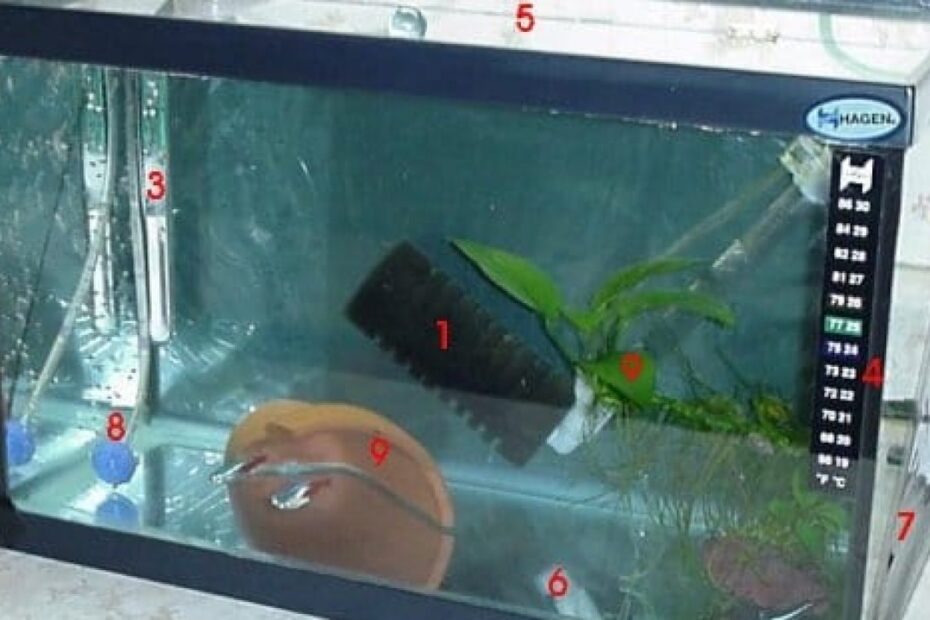A quarantine or hospital aquarium is an essential tool for hobbyists looking to maintain a healthy main aquarium. It serves as a separate environment to observe new fish before introducing them to the main tank, or to treat sick fish without exposing the entire community. Let’s delve into the setup, use, and benefits of a quarantine/hospital tank.
Setup:
- Size: The tank doesn’t need to be large, but it should provide enough space for the fish to move comfortably. Typically, 10 to 30 gallons is adequate for most hobbyists, but adjust based on your needs.
- Filtration: A simple sponge filter connected to an air pump is usually sufficient. Sponge filters are gentle, reduce water disturbance, and harbor beneficial bacteria.
- Heating: A small aquarium heater will ensure a stable temperature, which is vital for the fish’s health and for certain treatments.
- Lighting: Intense lighting isn’t necessary. A simple and dim light will suffice, primarily so you can observe the fish.
- Decoration: Keep the interior simple. A bare bottom is easiest to clean and prevents the accumulation of uneaten food or medication residues. If you want to include decoration, opt for something easy to sanitize, like PVC pipes, which can provide hiding places for fish.
- Water: Use water from your main aquarium to fill the quarantine tank. This ensures similar water parameters and reduces stress for the fish.
Usage:
- Quarantine for New Fish:
- Before introducing new fish to your main aquarium, place them in the quarantine tank for 2-4 weeks. This allows you to observe them for signs of illness and treat if necessary.
- This period also allows new fish to acclimate to your water parameters and recover from shipping stress without competition.
- Hospital Tank:
- If a fish in your main tank becomes ill, move it to the hospital tank for treatment. This isolates the disease and protects other inhabitants.
- It’s easier to adjust medication doses in a smaller volume of water.
Maintenance:
- Regular Water Changes: To ensure pristine water quality, perform regular water changes, typically more frequently than in the main tank.
- Equipment Sterilization: After each use, especially after treating sick fish, sterilize equipment and the tank itself. You can use a mild bleach solution, ensuring all bleach is thoroughly rinsed before the next use.
Benefits:
- Disease Prevention: A primary benefit is the prevention of introducing diseases or parasites into your main tank.
- Effective Treatment: Treating fish in a smaller volume is usually more effective and economical. It also allows for easier observation of the fish’s condition.
- Stress Reduction: Sick or new fish can recover without the added stress of competition or aggression from other fish.
Conclusion:
While setting up a quarantine or hospital tank might seem like an extra task, the benefits in terms of disease prevention and effective treatment are invaluable. It’s a small investment that can save significant time, money, and heartache in the long run by preventing larger outbreaks or issues in your main aquarium.

